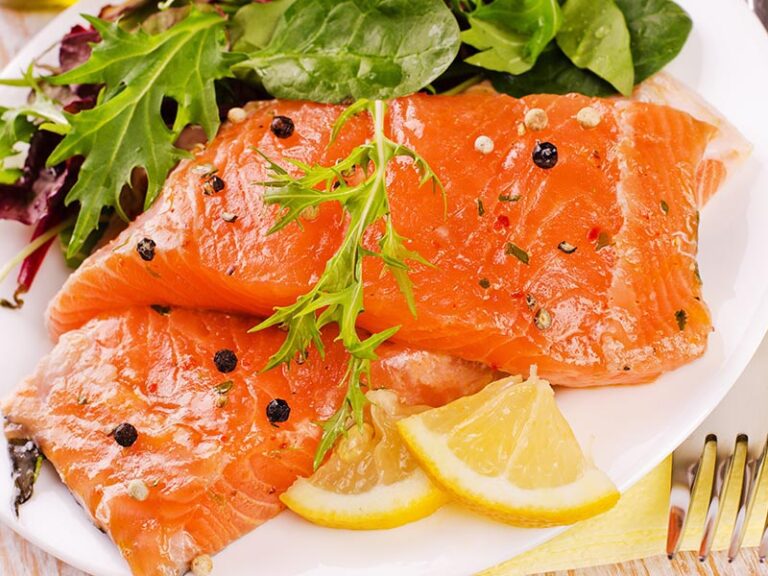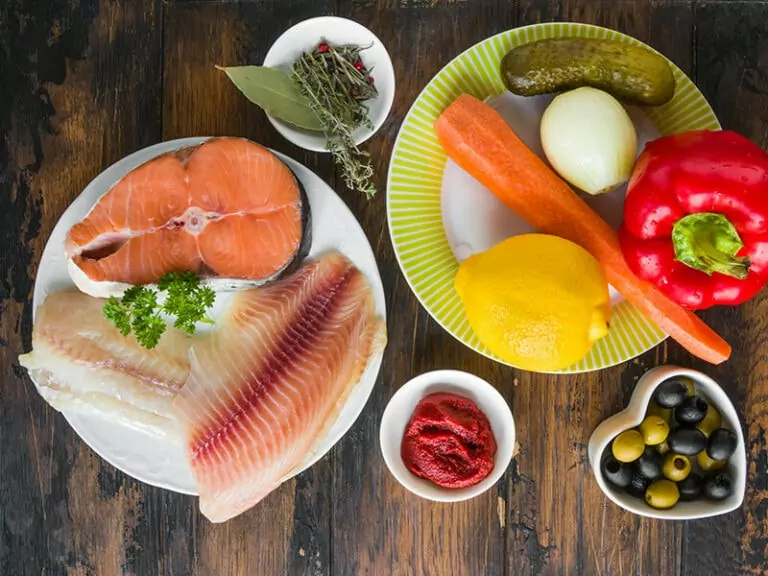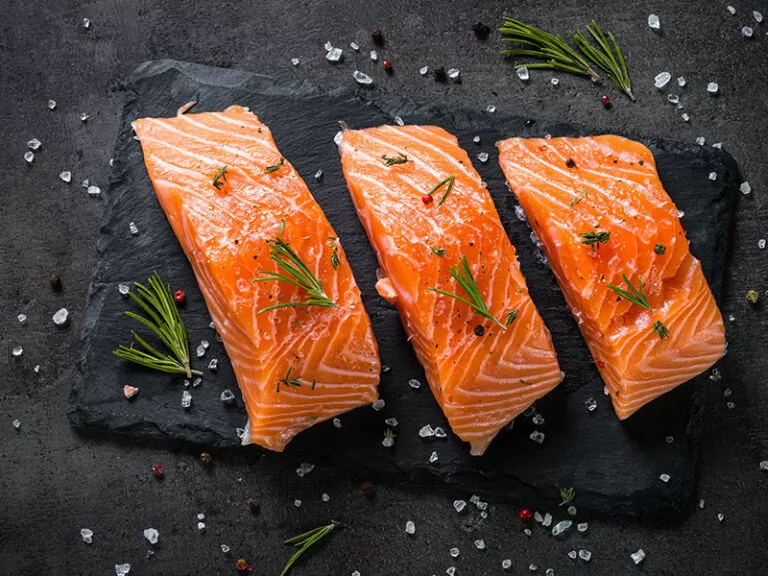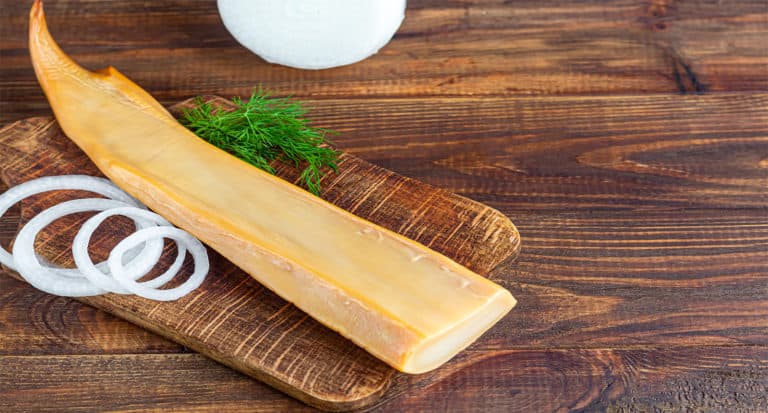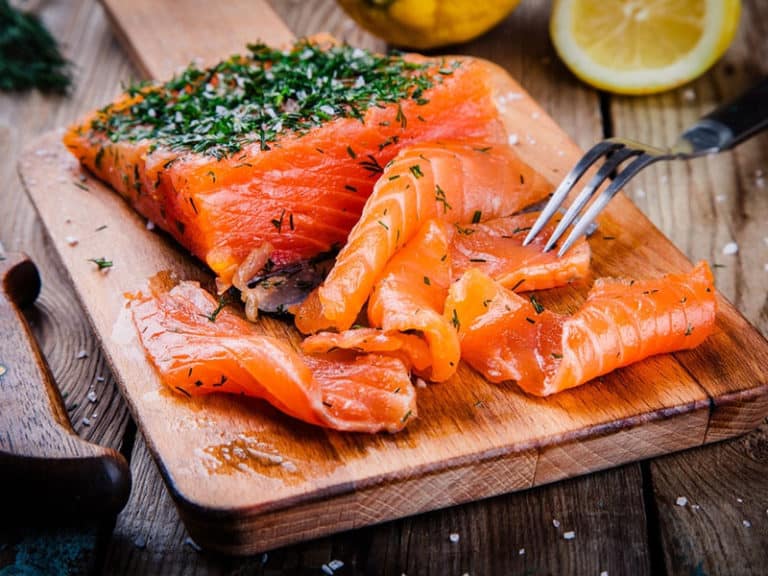Are black spots on salmon safe to eat? Are you seeking the answer to this question? Everything you need to know is in this article, so read on!
In addition, this post will show you some great tips for storing fresh salmon to prolong the fish’s shelf life.
Indeed, salmon is a rich source of nutrients, vitamins, and minerals, so using it properly is really important to take advantage of these nutrients. However, there are some concerns regarding the black spots on it. Is it safe to consume? Follow me to find out!
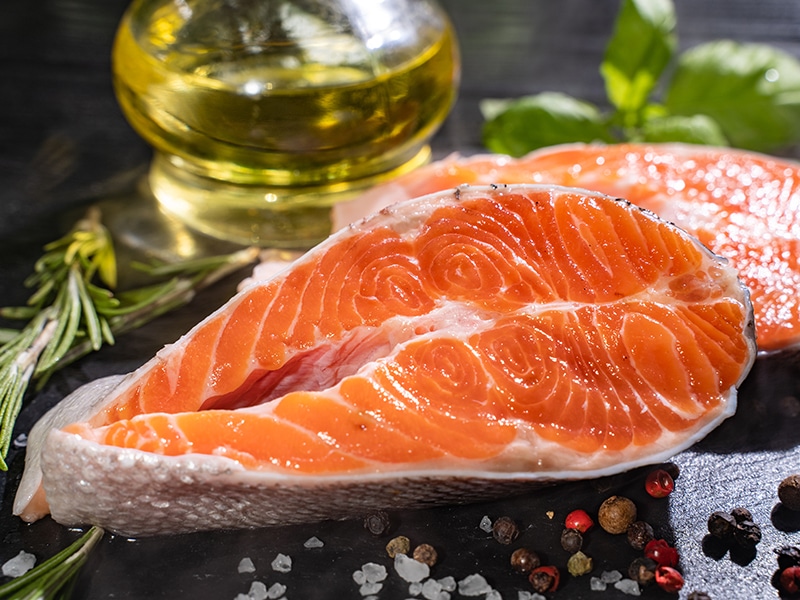
Why Should You Consume Salmon?
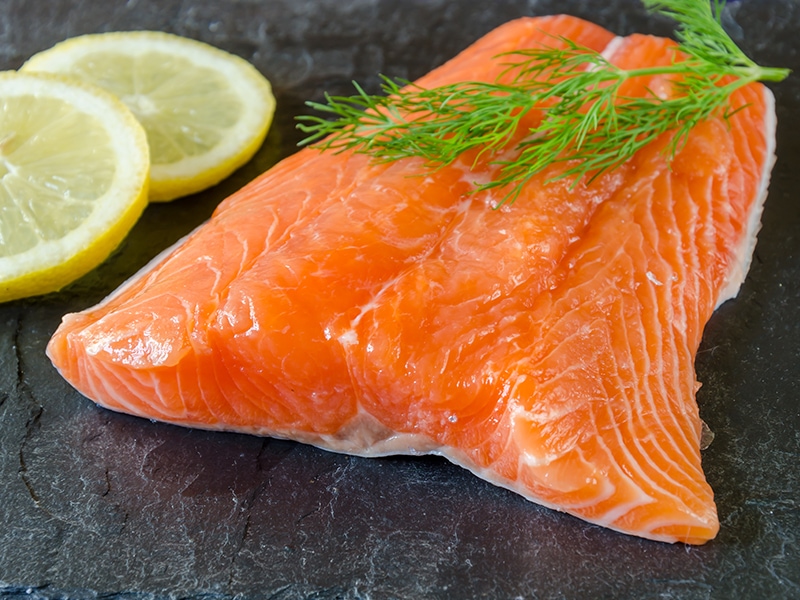
Salmon is one of the high-nutritious foods that many people love. They are rich in vitamins, nutrients, and minerals, so eating salmon is a fantastic way to improve your health.
Salmon is good for your brain and heart health because it contains a large amount of omega-3 fatty acids, which help prevent heart diseases, lower blood pressure, and decrease inflammation.
Consuming salmon is the best way to add protein to your body. In addition, salmon is high in vitamins B3, B6, B12, A, and D, which are beneficial to your brain health, hormonal balance, and nervous system.
Salmon is also a great food to cure cancers, such as liver cancer, skin cancer, or colorectal cancer. If you want to lose weight, salmon with low-calorie and high-protein content is a must-have food in your diet.
Aside from the nutritional value, the incredible flavor and texture are other attractive features of this food. The mild-flavored, oily, and rich taste will give you a pleasant mouthfeel when tasting salmon.
Preparing food from salmon is straightforward. You can make yummy grilled, baked, smoked, and poached food from this nutritious seafood. In addition, you can enjoy the natural flavor of raw salmon with delicious sashimi or sushi from fresh salmon.
Let’s explore the benefits of consuming salmon.
Can You Consume Salmon With Black Spots?
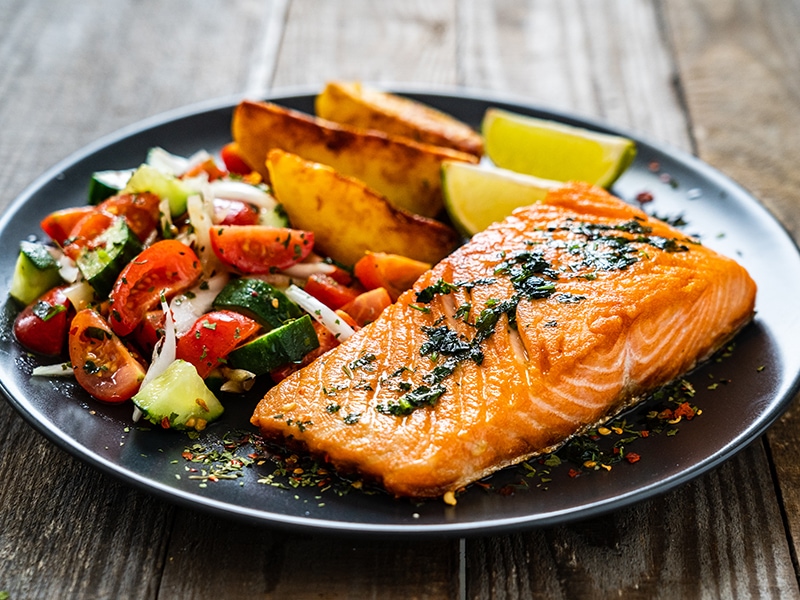
Are you wondering whether you can consume salmon filet with black spots? The answer will be revealed in this section.
Black spots are common on the lox or salmon filet, created by black antioxidants. This antioxidant is a kind of melanin. It is a black pigment that gives your skin dark color and protects skin from the sun’s rays (1).
When melanin appears on food, like meat or seafood, it also brings a dark brown or black hue to the food. However, melanin contains no harmful compounds, so it is safe to consume salmon with black spots.
Although you can eat salmon with black spots, you must ensure these spots are melanin spots because other kinds of black spots are one of the signs that salmon has gone bad. You should not eat salmon with black spots, weird smells, or deterioration for safety.
Normally, these dark spots are in the front part of the salmon filet, which is about 3 centimeters wide and has a thickness of a few millimeters. In fact, about 20 percent of Norwegians have these black spots.
These spots will not disappear when you cook salmon. So people often add seasonings and colorful sauces to hide this darkened discoloration. Sometimes, people might cut these spots out since they are also known as quality deviation.
Common Reasons Causing Black Spots On Salmon
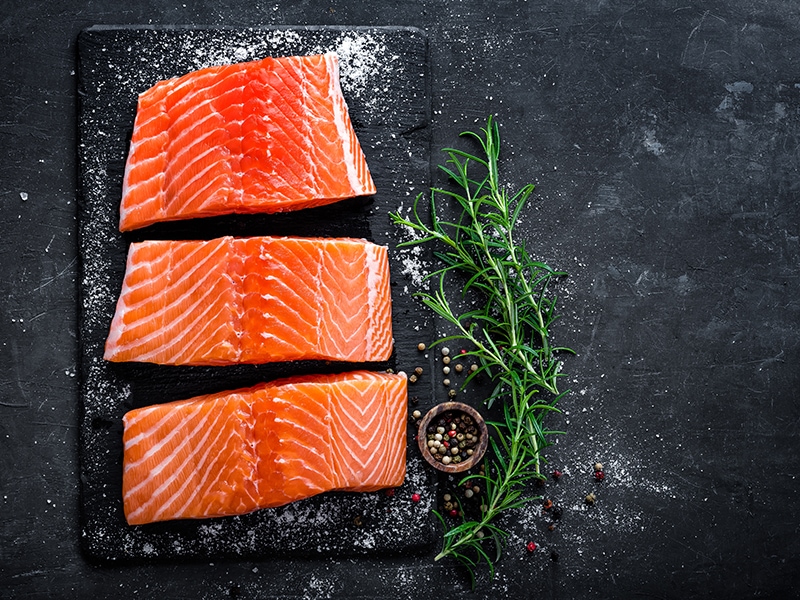
Do you know why your salmon gets black spots? As I mentioned in the above part, melanin is the main cause of these black spots on salmon. Melanin is created by the response of fish’s immune cells to the attacks of viruses and other threats.
Melanin is a naturally black antioxidant that fights against the virus and protects salmon. Indeed, you can see these black spots on wild and farmed-raised salmon, but they are more popular on wild ones.
That’s not the only reason because these black spots can be caused by scar tissue and blood. Of course, you should not throw your salmon because they are safe to eat, but you must prepare and cook them properly.
Nevertheless, salmon quality can be decreased because the fish will become more tender and lose a lot of vitamins, minerals, and nutrients with these black spots caused by blood or scar tissue. In addition, the discoloration can shorten the salmon’s shelf life.
What Are The Signs Of Bad Salmon?
You may confuse black spots caused by melanin and spoiled salmon. To help you prevent it, I will give you some signs of spoiled salmon that show you should not eat the fish anymore.
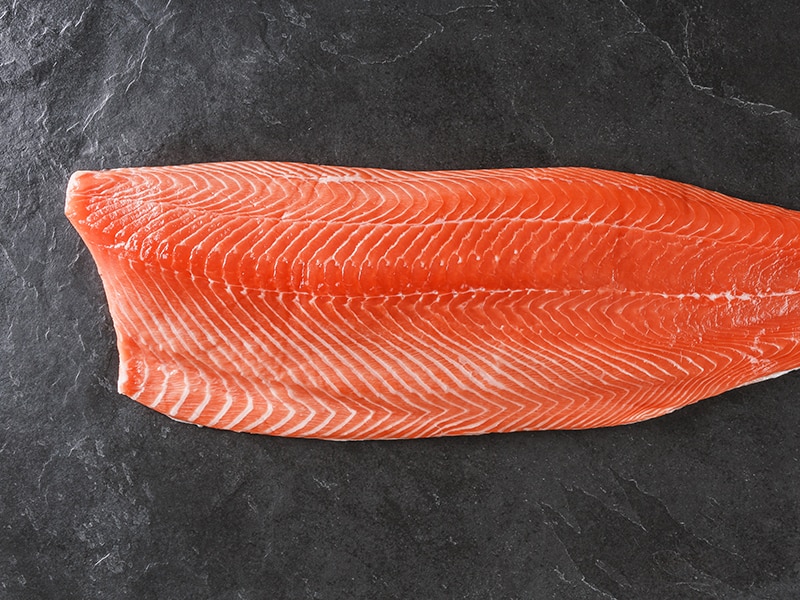
Discoloration
You can easily identify spoiled salmon based on the changes in its appearance. Typically, fresh salmon will have silver skin and bright pink-orange flesh. When the skin is dull, and the flesh turns gray, your salmon has gone bad.
White lines are one of the signs of fresh salmon, so if the lines are separated or disappear, your salmon can be spoiled. Plus, you should eliminate the fish when you see dark or whitish spots on your salmon.
Weird Smell
Another sign of bad salmon is the sour or ammonia odor. It appears when you keep your salmon in the fridge for a long time. You can only eat salmon if you smell the signature neutral and fishy aroma.
Slimy Texture
You can rely on the texture of salmon to determine whether the fish is still fresh. You should discard the salmon if the flesh is slimy and easy to break. Good salmon often have a moist and firm texture. Also, the flesh will have great elasticity when you push into it with your finger.
Expiration Dates
Besides these signs above, you can identify the salmon status based on the package’s expiry date. Ideally, you should not purchase expired salmon since the fish can cause food poisoning when you eat the salmon.
How Long Does Salmon Last?
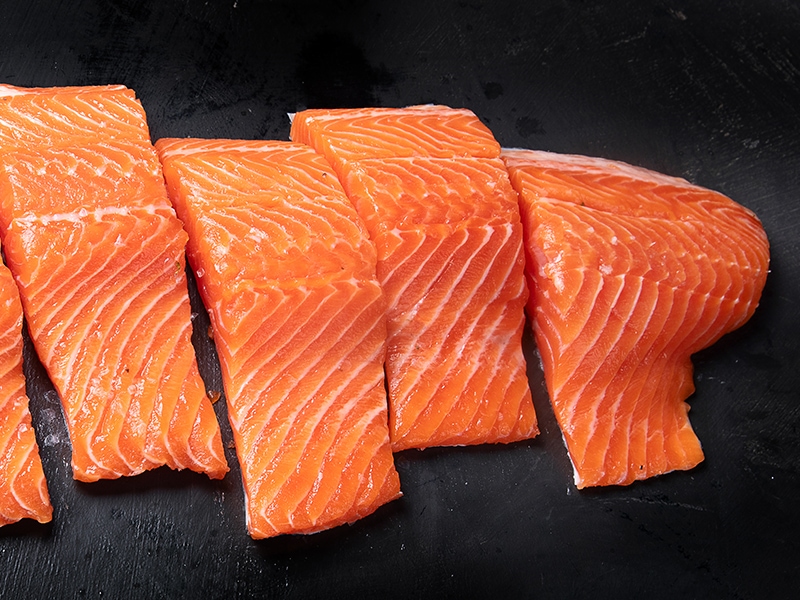
The shelf life of salmon is different depending on the fish’s status (cooked or raw) and where you store the fish. Of course, salmon’s shelf life can be longer if you store the fish properly and carefully.
If you leave raw salmon or cooked ones at room temperature, the fish can last up to 2 hours. To prolong the shelf life, you can store salmon in the refrigerator since refrigerated salmon can last from 1 to 2 days.
To maximize the shelf life of raw salmon, freezing the fish is a great suggestion. Normally, raw salmon can keep their quality for about 2 to 3 months when you place the fish in the freezer.
If you want to preserve cooked salmon, putting them in the freezer and fridge is a must-tried option. Typically, you can keep cooked salmon for 4 months in the freezer and 3 to 4 days in the refrigerator.
Check this clip to know more about the shelf life of fresh-caught fish stored in the fridge.
Proper Ways To Preserve Salmon Effectively
Proper preservation plays an essential role in keeping your salmon longer. There are many ideal ways, and here are some recommendations you should follow.
Store Salmon In The Fridge
Refrigerating salmon is a common method of storing fresh salmon. Below are steps to preserve salmon effectively in the fridge.
Step 1: Set the refrigerator to 32 degrees F
Step 2: Cover your salmon with plastic wrap
Step 3: Use aluminum foil to wrap the fish
Step 4: Place the salmon in the fridge to store the fish
How To Freeze The Salmon?
In case you want to store fresh salmon longer, freezing the fish is a fantastic recommendation. Let’s follow these steps instantly.
Step 1: Use plastic wrap to wrap your salmon
Step 2: Continue to cover the fish with a layer of aluminum
Step 3: Place salmon in an air-tight package
Step 4: Put the package in a freezer bag and attach the date labels for easy tracking
Step 5: Place the bag in the freezer to store the fish
Follow these amazing steps to preserve your salmon in the freezer effectively.
FAQs
Here are some commonly asked questions related to this topic and their answers. Let’s focus on reading them to improve your knowledge.
Feel Free To Eat Salmon With Black Spots!
Do you see any black spots on your salmon? If yes, you can consume the fish, as long as there is no weird smell or taste.
To enhance the overall flavor and make them more eye-catching, it’s better to add seasonings and sauces while cooking salmon with black spots.
If you find this article valuable to you and other people, don’t forget to share it with others to convey helpful information to them. Besides, if you have any questions, feel free to leave them in the common part. Thanks a lot!
References
- “Melanin: What Is It, Types & Benefits.” Cleveland Clinic

